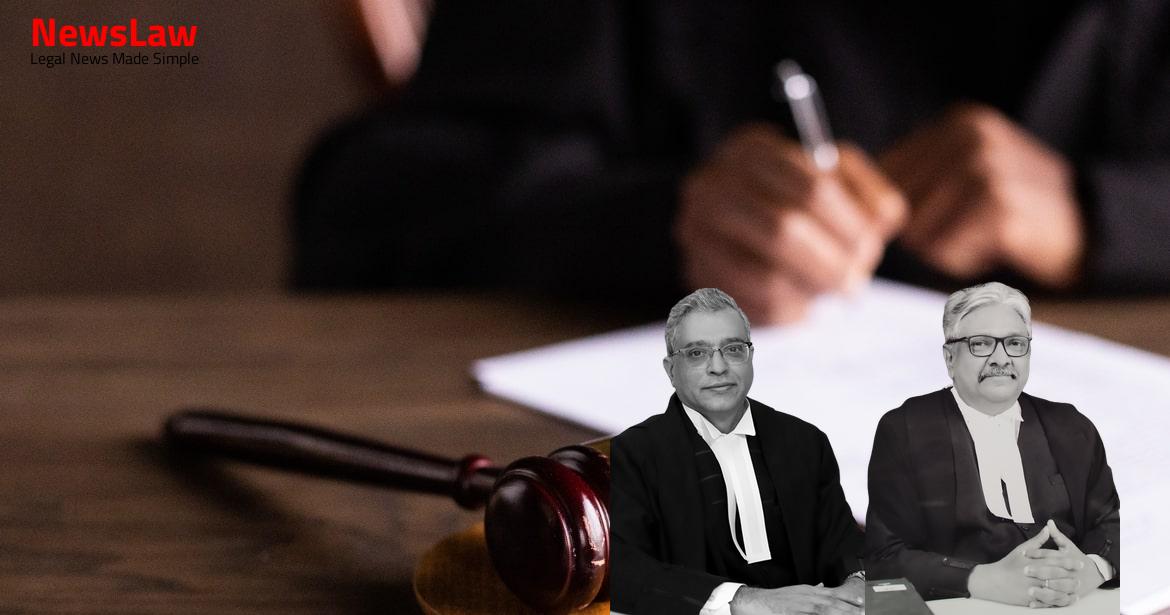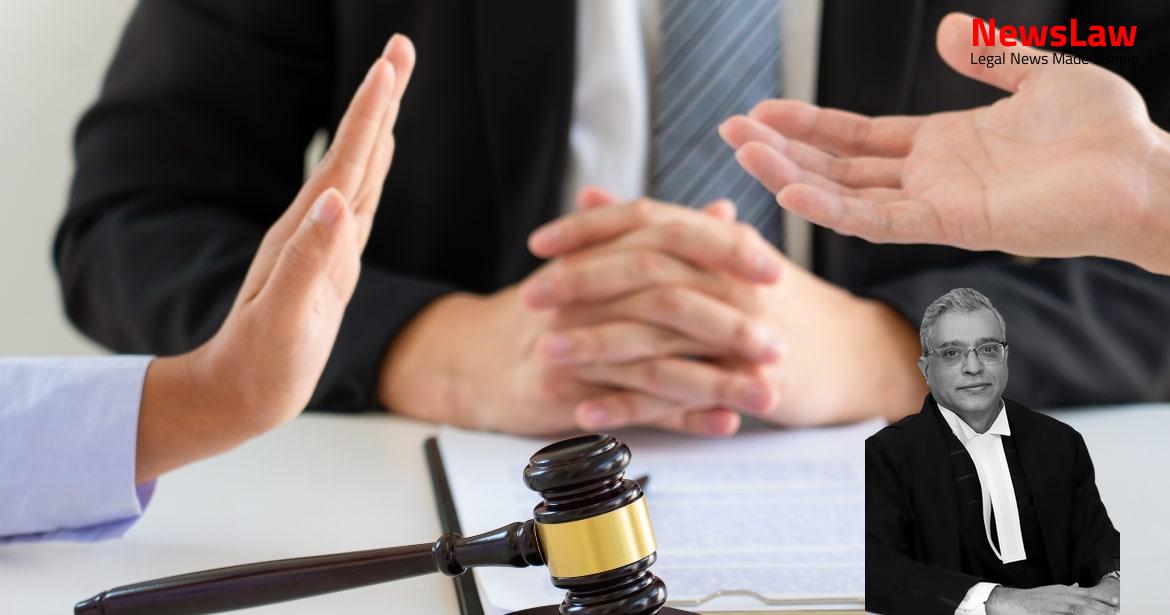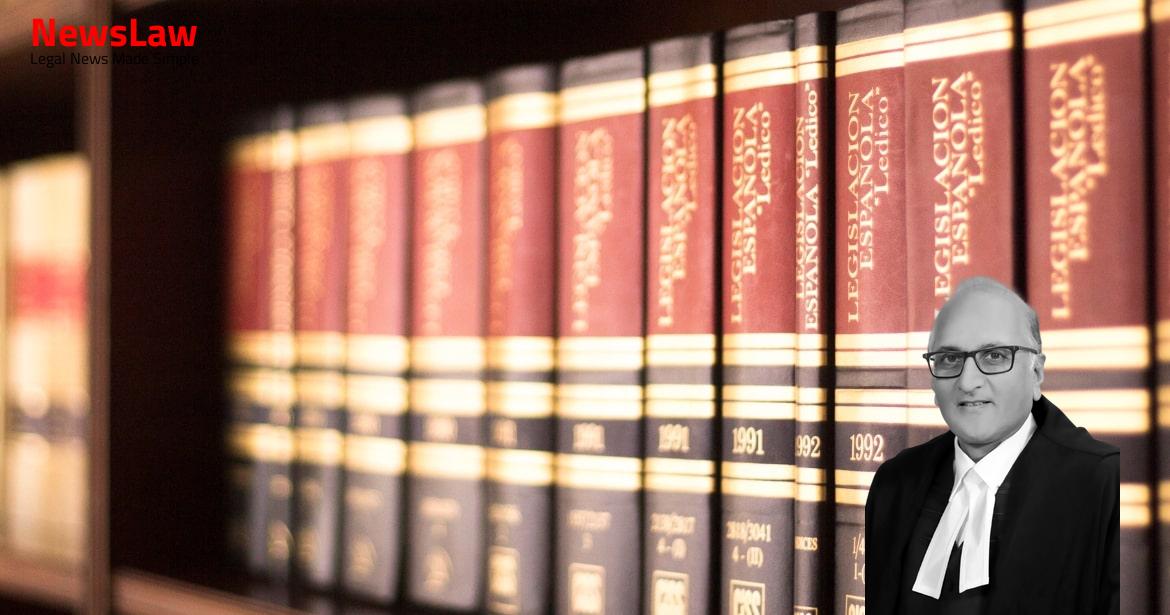The recent Supreme Court decision delves into the legal analysis of Rule 174(2)(c) concerning the replacement of vehicles under permits. Emphasizing the significance of public safety and road regulations, the Court’s interpretation sheds light on the complexities of balancing legal provisions with the overarching goal of ensuring road safety and public interest. Find out more about the Court’s nuanced analysis in our blog post.
Facts
- The Respondent was granted a stage carriage operator permit for a 38-Seater, 2016 model vehicle by the Authority.
- The Respondent applied for permission to replace the vehicle covered under his permit with a 33-Seater, 2006 model vehicle.
- The challenge before the Court pertains to the order of the Authority granting or denying this permission.
- A similar case, Writ Appeal No.1470/2017, was also considered in conjunction with this case.
- The Respondent filed a Writ Petition before the High Court of Kerala on 12.6.2017 due to alleged inaction by the Authority.
- The Division Bench dismissed the Writ Appeals stating that Rule l74(2)(c) of the Kerala Motor Vehicle Rules, 1989 exceeds the provisions of the Act.
- Rules cannot override or restrict the provisions of the Act; they must be consistent with the Act.
- Subordinate authorities, like the State, must ensure that rules made under delegated authority are in line with the Act.
- The Single Judge directed the State and the Authority to consider the application based only on road-worthiness, without considering the model of the vehicle.
Also Read: Clarification on Advertisement for Lecturer Post in Home Science
Issue
- Respondents challenging the legality of Rule 174(2)(c) without specifying in the Writ Petition.
- High Court permitting such submission to challenge the legality of Rule 174(2)(c).
Also Read: Judicial Review of Administrative Actions in Educational Matters
Arguments
- Shri G. Prakash, representing the State and Authority, argues that Rule 174(2)(c) aims to ensure public safety by prohibiting the replacement of a permitted vehicle with an older model.
- He suggests that Rule 174(2)(c) should be viewed in the context of the Authority’s discretion in considering replacement applications.
- Prakash contends that the rejection of such applications is not automatic and can be based on valid reasons.
- He asserts that since there was no specific challenge to Rule 174(2)(c), the High Court erred in declaring it inoperative.
- Prakash argues that issues related to vehicle conditions, verification methodologies, and age limits fall under the Central Government’s jurisdiction, not the State Government’s.
- He claims that challenging the impugned order’s competence is legally permissible.
- Prakash points out that other states do not have rules similar to Rule 174(2)(c) concerning vehicle fitness.
- He concludes by stating that the High Court’s decision has been in effect for over four years and has been followed in subsequent cases, suggesting that the Supreme Court should not interfere under Article 136.
- Amicus Curiae urged for the impugned judgment to be set-aside and the Rule be upheld.
Also Read: Scope of Rule-Making Power in Disciplinary Proceedings
Analysis
- The statutory powers to issue permits with conditions of stage carriages are for the benefit and protection of the general public.
- Section 83 of the Motor Vehicles Act, 1988 allows the replacement of vehicles covered under existing permits with vehicles of the same nature.
- State Governments have the power to make rules for carrying out the provisions of Chapter V, related to transport vehicles.
- The Kerala Motor Vehicle Rules, 1989 specify requirements for applications and permits for stage carriages.
- Central and State Governments have distinct rule-making powers for implementing provisions of the Motor Vehicles Act.
- Section 71 outlines the procedure Regional Transport Authorities must follow when considering applications for stage carriage permits.
- The age limit of motor vehicles is set by the Central Government for public safety and convenience.
- Rule 159 of Kerala Motor Vehicle Rules, 1989 mandates that permits must bear the registration mark of the vehicle.
- Section 39 prohibits driving a motor vehicle without registration for regulating vehicle usage in public places.
- The power of the Central Government to prescribe age limit of a vehicle is in Section 59.
- Insurance companies spent Rs. 11,480 crores on compensations for road accidents in 2015-2016.
- The Authority has the discretion to reject an application based on certain grounds.
- Provisions in the Act and rules are in furtherance of the Act’s object and constitutionally valid.
- Courts interpret statutes by looking at words in context to find the correct meaning.
- The Rule 174(2)(c) is valid and does not override Section 83 as held by the High Court.
- Judgments emphasized the importance of vehicle information in permit applications.
- Replacement of a vehicle under a permit should be of the ‘same nature’ to ensure permit conditions are maintained.
- The statute must be read as a whole to understand its provisions.
- Discretion exercised by the Authority with Rule 174(2)(c) must be reasonable and non-arbitrary.
- Rules must be consistent with the Act and cannot restrict the conferred rights.
- The expression ‘of the same nature’ in Section 83 relates to the type of vehicle in the permit.
- Forms and rules require details on the type of vehicles to be furnished in applications.
- The rules for replacement of vehicles under permits do not contradict Section 83.
- The Authorities hold primary responsibility for addressing road safety concerns.
- The necessity of having a bus at least a 7-year-old model to ensure the safety and comfort of passengers on chaotic highways is relevant.
- New models incorporate new devices to improve safety and comfort for passengers.
- Previous court cases have highlighted the serious consequences of motor accidents and the need for safety measures.
- Older bus models have lesser chances of having the latest safety measures.
- Conditions imposed by amendments in the Rules of 1994 aim to provide safe, secure, and convenient transport services.
- Furnishing all details of a vehicle is important for road safety.
- The age and model of the permitted bus are crucial for human rights of road users.
- Interpreting statutes must consider the text and context for the advancement of public interest.
- The Rule enabling replacement of vehicles under the permit should align with public interest and safety regulations.
- The High Court’s interpretation of Rule 174(2)(c) read with Section 83 needs to be understood in context for public safety and interest.
- The expression ‘of the same nature’ in Section 83 can have multiple interpretations and should be kept open-ended.
- Conditions to save lives and limbs through vehicle regulations are within the legal domain and essential to enforce road safety.
Decision
- The judgment of the High Court in Writ Appeal Nos. 1466 and 1470 of 2017 has been set aside.
- Rule 174 (2) (c) is held to be intra vires the provisions of the Act and Section 83 of the Motor Vehicles Act.
- The appeals have been allowed.
- Appreciation is expressed for the assistance provided by the Amicus Curiae, Shri Santosh Krishnan.
- Judges K.M. Joseph and Pamidighantam Sri Narasimha were involved in the case.
- The judgment was delivered in New Delhi on February 17, 2022.
Case Title: REGIONAL TRANSPORT AUTHORITY Vs. SHAJU ETC. (2022 INSC 196)
Case Number: C.A. No.-001453-001454 / 2022



